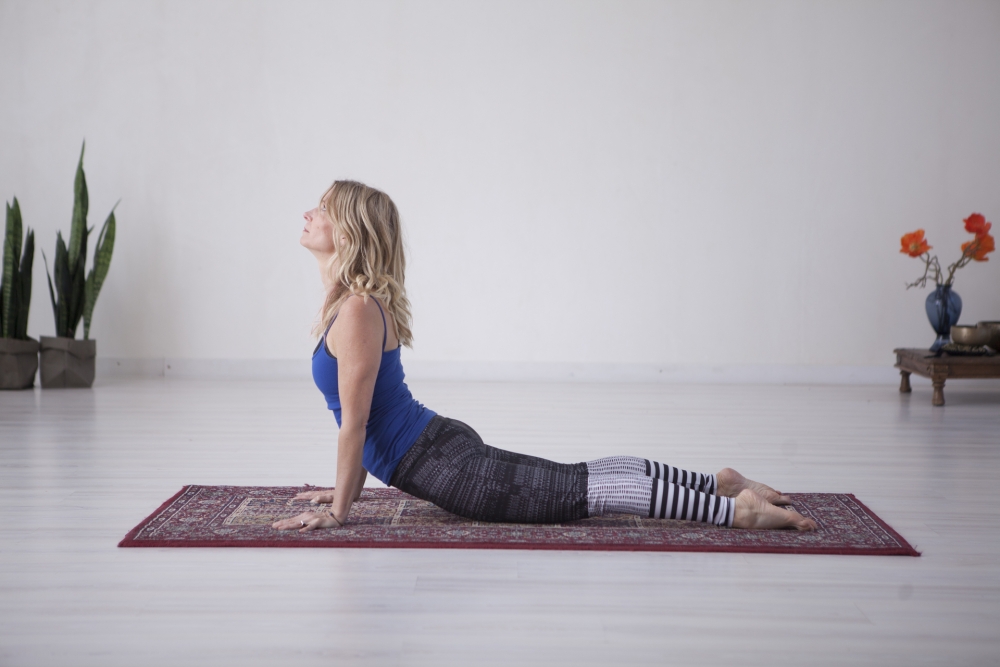I have such a big history with this pose and in the beginning, I was not able to do it at all. I even found Sphinx pose – a less intense version of this pose – very challenging. This was mainly due to my tight, compressed lower back.
I can now practise Bhujangasana without my lower back screaming for me stop and I am even quite comfortable in the pose. I still see a lot of my colleagues bending back so much more gracefully than I do, but as you all know, it’s not about what the pose looks like, it’s how it feels for you 🙂
If you are not a natural back bender like myself, here are a few alignment tips:
First of all, you need length in the lower back. To create more space between the sacrum and lumbar spine, it’s helpful to try the following actions:
- ground the tops of the feet into the floor
- engage your legs so much that your knees lift slightly off the floor
- press the tailbone down, draw the low belly in
If your lower back hurts, try contracting the glutes – but only the lower half! – and don’t let the upper thighs roll out as a result of that action. To bend backward safely we need an inward rotation of the thighbones.
Keeping all of these actions in the lower body, we can start to arch the upper back. The idea of length in the spine remains, so keep the spine long, lifting your chest forward and up. Arms move towards straight. Shoulders roll on the back and keep your head in line with the spine – that is, unless you are a ‘natural’ back bender, then you can come into the full pose with your head tilting slightly upwards.
If you find back bending difficult, keep Cobra pose as low as you need to with your elbows bent and pointing back, or lower down to Sphinx pose on the forearms. Explore the different variations but make sure you don’t feel a pinching sensation in your lower back. Keep it light enough so you can breathe deeply and freely.
Here is a step-by-step instruction of the Cobra pose.

